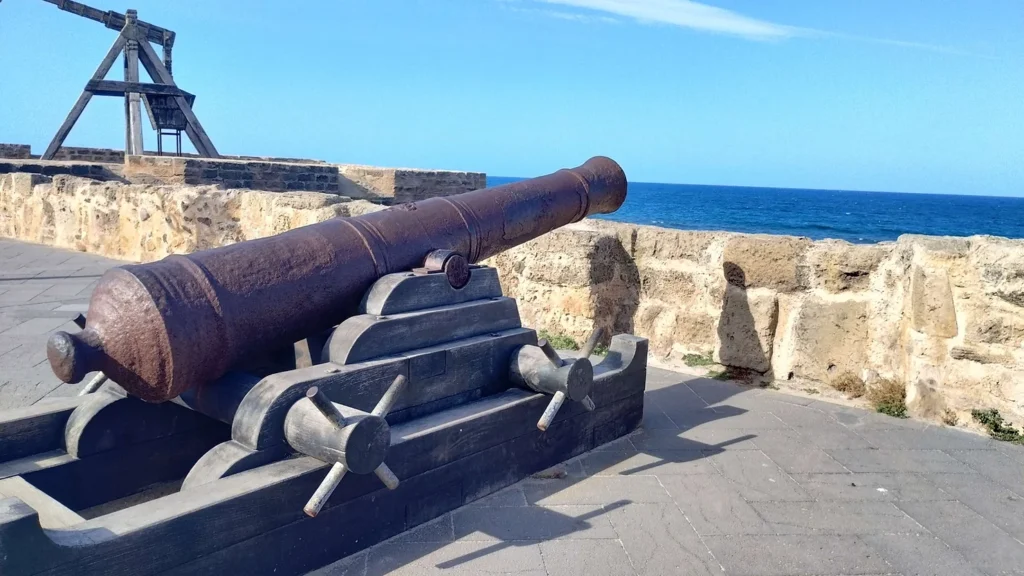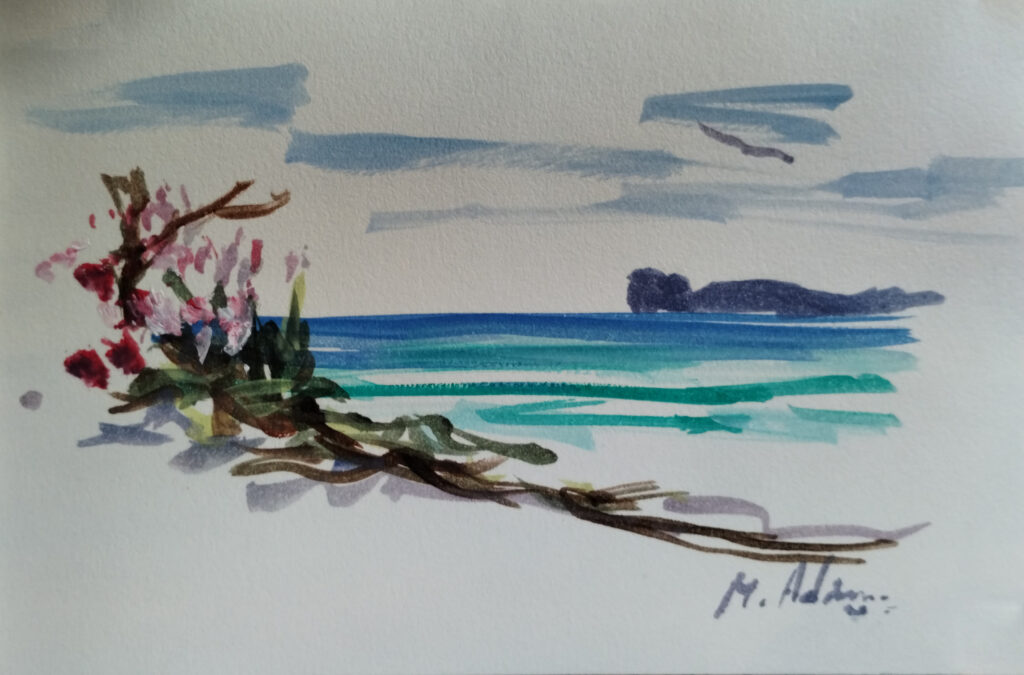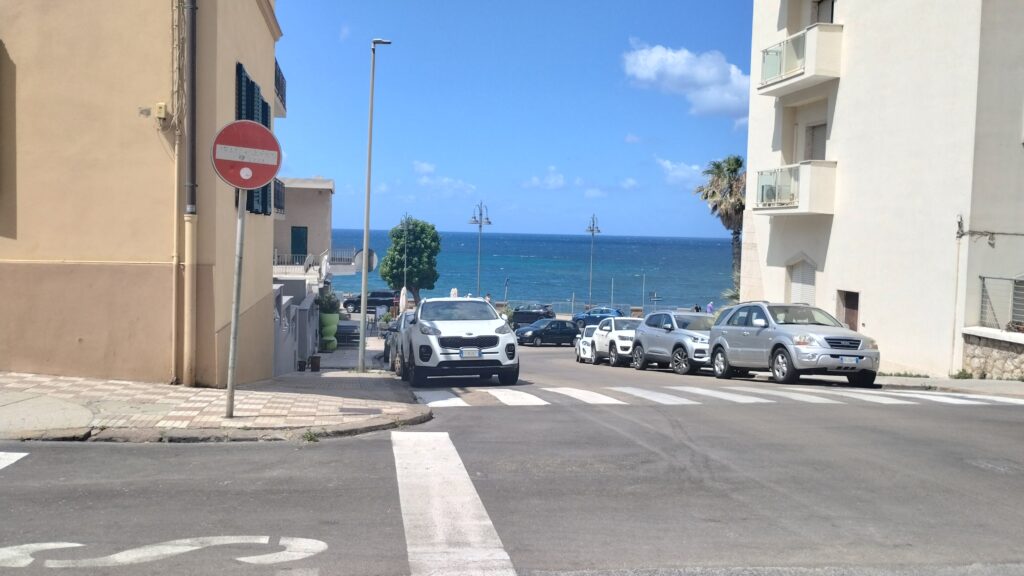Alghero, Sardegna. A town on the western coast of one of Italy’s islands. It is known as the walled city – great stone walls rise out of the ocean to surround and protect the city from pirate attacks. The walls used to be far above the houses within, however were halfed about a century ago to allow the sea breeze into the streets and keep the temperature down. Nowadays you can walk along the edge of the wall overlooking the coast, before wandering further into the city and cobbled streets. Ancient defenses still sit atop the wall. Instead of instruments for war they are now used as playthings for children.


In Alghero there is a designated section of the city called the ‘Old Town’ where the streets are all skinny cobblestone and the buildings are old traditional italian style. Built before cars and for the most part kept up in appearance and functionality. Scaffolding can be seen in the side alleyways re-doing facades to restore them to their former glory. Shops line the streets in the center of the Old town designed to draw tourists in. Besides the barrage of gimmick driven stores the main type of shops are coral jewelry and patterned dresses. The florescent red coral comes in necklaces, anklets, earings, and any other sort of jewelry imaginable with a sprinkle of turquoise if you’re lucky. As for fashion, all dresses sold are heavily patterned and constructed from a thin and lightweight material- whether this is for keeping cool in the oppressive heat or for cost cutting purposes is unknown. The only articles available without patterns are cute short white lace dresses that can often be found with a crochet top in a babydoll style. They are all very pretty but contrast directly with any current American fashion trends. The only people I have seen wearing something that would be considered fashionable streetwear in America are 12 to 17 year olds- the teenage scene apparently draws heavily from American influence while the rest rejects it in favor of something more European. Depicted is a standard one of these tourist/local oriented clothing shops, packed with bright patterned dresses and a small variety of bags and jewelry. Countless other storefronts decorated in the same way with the same ware line the streets of the city center.
Marco Adamo di Alghero

Marco Adamo di Alghero, a local artist. He has been painting his whole life and works often as a street artist, occasionally selling personalized commissions. He makes anywhere between 5 and 8 pieces a day which depend on complexity and size. His subjects are always Cappo Caccia, the local old town, or a beach somewhere nice with one of the two in the background. If I had to guess I’d say he is between 50 and 60 years of age. I stopped to chat with him on my way to the store and he instantly opened up once I told him I was an artist as well and showed him my sketchbook. He’s been painting since about 10 years old, selling his works at 50 to 80 euros a piece while painting on the street during the summer season. Tourists love his works, and they are almost perfect as he has been painting the same thing for about 40 years. The oils on his pallet don’t dry out for about 3 days, so once he has the perfect color he can resuse it for the mountains in every piece for the next three days. His color theory is on point. He did a comission of Andrea Jensen boat for Colin and Rachel several years ago, which they have hanging in their villa home. He also did a painting for the president of Italy, of which he has a picture on his phone of the president presenting his artwork. He took the leap of faith into the world of art and succeeded. I wonder if he ever regrets becoming a tourism artist, unable to paint what he wants but slave to the whims of passerbys and people not staying in ton longer than a week. After I gave him my watercolor notebook, he quickly did a 2 minute painting of cappo caccia in the distance. He was truly an amazing guy and friendly spirit.

The Mill Inn

“The Mill Inn” was an Italian bar styled after an Irish pub with a long wooden bar top complimented by wooden panneling on the walls. Even the name seems Irish. The only music played is on blast from speakers and a large TV hung above the entranceway on a strict diet of class rock. Exclusively in English. Sweet Home Alabama plays for the third time tonight, followed by Bohemian Rhapsody. The bartender, on the other hand, speaks only a few words of English- and most of the patrons are Italian. Outside horse-drawn carriges (secretly powered by motors) give tours to foriegners looking to experience the true ‘old town’ feel while learning about the history. The Entrance to the bar is rather hidden in a back alleyway off the main beaten path of tourism. In fact if the sign was taken away it would be hard to distinguish it as a bar at all admist the residential buildings, and if the sign was taken in and the doors closed no one would know.
In this Irish-style Italian pub I ran into an old man while I was drawing, approximately 86 years old. He dressed as my father does: long kacki pants with a high waited belt and plaid short sleeved button up T-shirt, finishing the look with a beige fedora and Nike sneakers. I later discovered he was the uncle of the bartender who was already well into his 50s or 60s. He came over to my barstool to ask about my drawing and pointed to the gorgeous renders of crabs on the walls. They were very large works done in graphite on what appeared to be canvas. They were his creations. Striking up a conversation, I found that he used to be an art professor at a University in Milan teaching Leonardo Da Vinci’s study of form in his younger years. He had a table to himself in the empty pub near the back, and invited me over. He had a cheese, ham, and eggplant pizza which he offered me a slice of as we chatted. We talked at length in my broken Italian and his thick ancient accent, discussing cavement painting and his youth where he would eat crabs on the beach when he was 8 or 9 years old. I think he ate them raw, but that part was lost in translation. Every now and then when I didn’t understand a crucial word in Italian he would call over the bartender to translate in very bad English, worse than my Italian. I had the feeling he would come here often to order pizza in and sit by himself, chatting with the few patrons the bar had in the early hours of 10pm. He was an incredibly sweet old man.
Conclusion

Alghero is a town rich with history, influenced by both Spanish and Italian backgrounds. Many different parts of life come together in the old town to make it what it is- a vibrant tourist destination exploiting stories from history to sell merchandise. I don’t mean that in a bad way; I think it’s beautiful. So many people coming together to share their cultures with passerbys, as the town teeters on the edge of purely tourist and the older generation that remebers the before time. From the corral shops (most of which is not supplied from Alghero or surronding areas due to over harvesting and destroying natural corral habbitats), to the themed Irish bars, to the African clothing stalls- So many different cultures being mimmicked and mirroed, yet, underneath the surface, undeniably Italian because of the people.
The people and their stories are what makes this town worth while.














